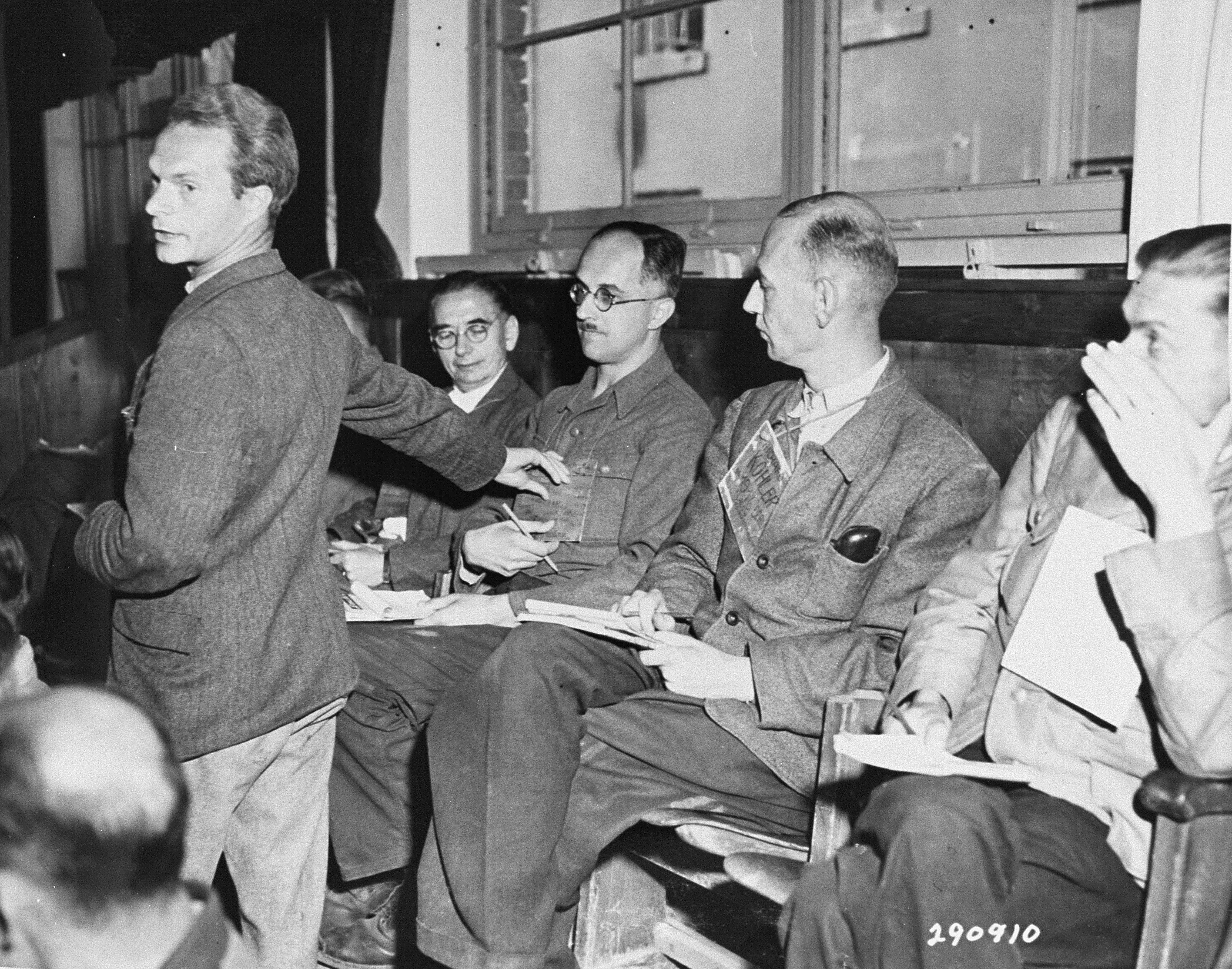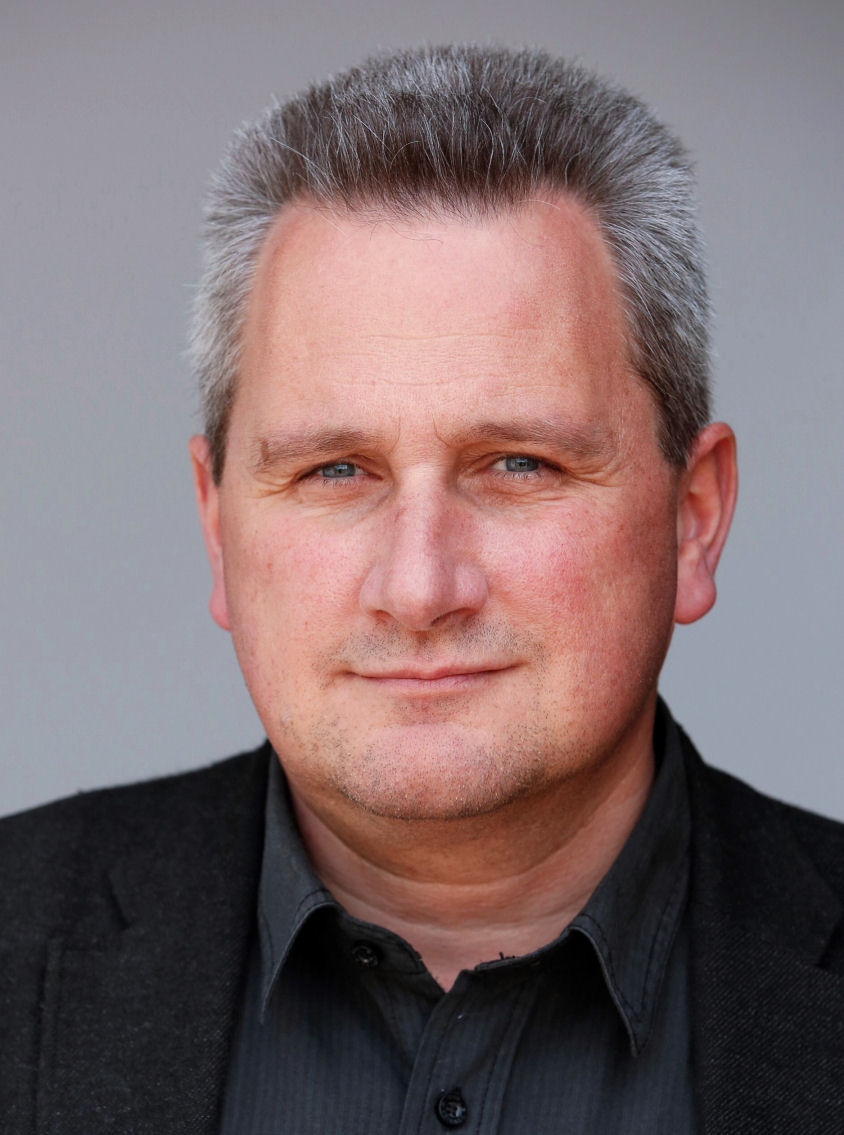|
Boelcke-Kaserne Koblenz
Boelcke-Kaserne concentration camp (; also Nordhausen) was a subcamp of the Mittelbau-Dora concentration camp complex where prisoners were left to die after they became unable to work. It was located inside a former Luftwaffe barracks complex in Nordhausen, Thuringia, Germany, adjacent to several pre-existing forced labor camps. During its three-month existence, about 6,000 prisoners passed through the camp and almost 3,000 died there under "indescribable" conditions. More than a thousand prisoners were killed during the bombing of Nordhausen by the Royal Air Force on 3–4 April 1945. Their corpses were found by the US Army units that liberated the camp on 11 April. Photographs and newsreel footage of the camp were reported internationally and made Nordhausen notorious in many parts of the world. History In 1936, a Luftwaffe barracks complex, named after the World War I flying ace Oswald Boelcke, was constructed in the suburbs of the city of Nordhausen, Thuringia. From 19 ... [...More Info...] [...Related Items...] OR: [Wikipedia] [Google] [Baidu] |
Nordhausen, Thuringia
Nordhausen () is a city in Thuringia, Germany. It is the capital of the Nordhausen district and the urban centre of northern Thuringia and the southern Harz region; its population is 42,000. Nordhausen is located approximately north of Erfurt, west of Halle, south of Braunschweig and east of Göttingen. Nordhausen was first mentioned in records in the year 927 and became one of the most important cities in central Germany during the later Middle Ages. The city is situated on the Zorge river, a tributary of the Helme within the fertile region of Goldene Aue ''(golden floodplain)'' at the southern edge of the Harz mountains. In the early 13th century, it became a free imperial city, so that it was an independent and republican self-ruled member of the Holy Roman Empire. Due to its long-distance trade, Nordhausen was prosperous and influential, with a population of 8,000 around 1500. It was the third-largest city in Thuringia after Erfurt, today's capital, and Mühlhausen, the ... [...More Info...] [...Related Items...] OR: [Wikipedia] [Google] [Baidu] |
Green Triangle
Nazi concentration camp badges, primarily triangles, were part of the system of identification in German camps. They were used in the concentration camps in the German-occupied countries to identify the reason the prisoners had been placed there. The triangles were made of fabric and were sewn on jackets and trousers of the prisoners. These mandatory badges of shame had specific meanings indicated by their colour and shape. Such emblems helped guards assign tasks to the detainees. For example, a guard at a glance could see if someone was a convicted criminal (green patch) and thus likely of a tough temperament suitable for ''kapo'' duty. Someone with an escape suspect mark usually would not be assigned to work squads operating outside the camp fence. Someone wearing an F could be called upon to help translate guards' spoken instructions to a trainload of new arrivals from France. Some historical monuments quote the badge-imagery, with the use of a triangle being a sort of visua ... [...More Info...] [...Related Items...] OR: [Wikipedia] [Google] [Baidu] |
Prisoner Functionaries
A kapo or prisoner functionary (german: Funktionshäftling) was a prisoner in a Nazi camp who was assigned by the ''Schutzstaffel'' (SS) guards to supervise forced labor or carry out administrative tasks. Also called "prisoner self-administration", the prisoner functionary system minimized costs by allowing camps to function with fewer SS personnel. The system was designed to turn victim against victim, as the prisoner functionaries were pitted against their fellow prisoners in order to maintain the favor of their SS overseers. If they neglected their duties, they would be demoted to ordinary prisoners and be subject to other kapos. Many prisoner functionaries were recruited from the ranks of violent criminal gangs rather than from the more numerous political, religious, and racial prisoners; such criminal convicts were known for their brutality toward other prisoners. This brutality was tolerated by the SS and was an integral part of the camp system. Prisoner functionaries wer ... [...More Info...] [...Related Items...] OR: [Wikipedia] [Google] [Baidu] |
Heinrich Schmidt (physician)
Ernst Heinrich Schmidt (27 March 1912 – 28 November 2000) was a German physician and member of the SS, who practised Nazi medicine in a variety of German concentration camps during World War II. He was tried in 1947 and 1975 for complicity in war crimes, but was acquitted both times. Biography Schmidt was born in Altenburg, Germany. In 1937, while studying at the University of Leipzig to become a medical doctor, he joined the Nazi Party (Member No. 555,294) and the SS (Member No. 23,069). At the outbreak of World War II, Schmidt was first assigned to a Waffen-SS military hospital.Statement by Heinrich Schmidt on 25 October 1945 In 1941, Schmidt became a camp physician at the [...More Info...] [...Related Items...] OR: [Wikipedia] [Google] [Baidu] |
Encyclopedia Of Camps And Ghettos
An encyclopedia (American English) or encyclopædia (British English) is a reference work or compendium providing summaries of knowledge either general or special to a particular field or discipline. Encyclopedias are divided into article (publishing), articles or entries that are arranged Alphabetical order, alphabetically by article name or by thematic categories, or else are Hyperlink, hyperlinked and searchable. Encyclopedia entries are longer and more detailed than those in most dictionary, dictionaries. Generally speaking, encyclopedia articles focus on ''factual information'' concerning the subject named in the article's title; this is unlike dictionary entries, which focus on Linguistics, linguistic information about words, such as their etymology, meaning, pronunciation, use, and grammar, grammatical forms.Béjoint, Henri (2000)''Modern Lexicography'', pp. 30–31. Oxford University Press. Encyclopedias have existed for around 2,000 years and have evolved considera ... [...More Info...] [...Related Items...] OR: [Wikipedia] [Google] [Baidu] |
Wehrmacht
The ''Wehrmacht'' (, ) were the unified armed forces of Nazi Germany from 1935 to 1945. It consisted of the ''Heer'' (army), the ''Kriegsmarine'' (navy) and the ''Luftwaffe'' (air force). The designation "''Wehrmacht''" replaced the previously used term and was the manifestation of the Nazi regime's efforts to rearm Germany to a greater extent than the Treaty of Versailles permitted. After the Nazi rise to power in 1933, one of Adolf Hitler's most overt and audacious moves was to establish the ''Wehrmacht'', a modern offensively-capable armed force, fulfilling the Nazi régime's long-term goals of regaining lost territory as well as gaining new territory and dominating its neighbours. This required the reinstatement of conscription and massive investment and defense spending on the arms industry. The ''Wehrmacht'' formed the heart of Germany's politico-military power. In the early part of the Second World War, the ''Wehrmacht'' employed combined arms tactics (close-cover ... [...More Info...] [...Related Items...] OR: [Wikipedia] [Google] [Baidu] |
Jens-Christian Wagner
Jens-Christian Wagner (born 1966) is a German historian who specializes in the Nazi era and the politics of memory. Wagner has published multiple academic books about Mittelbau-Dora concentration camp and its subcamps. He was the director of Mittelbau-Dora memorial from 2001, was the chairman of , and became the overseer of Buchenwald and Mittelbau-Dora Memorials Foundation in 2020. Historical research In 1999, Wagner received his doctorate from the University of Göttingen; his dissertation, supervised by , focused on the Mittelbau-Dora concentration camp and was later published as ''Produktion des Todes: Das KZ Mittelbau-Dora'' ("Production of Death: the Mittelbau-Dora concentration camp"). , it is the only book that covers the entire history of Mittelbau-Dora. The book focuses on the collaboration between the SS and the armaments industry, the relationship between extermination and forced labor, and the position of the camp vis-a-vis its surroundings. According to reviewer C ... [...More Info...] [...Related Items...] OR: [Wikipedia] [Google] [Baidu] |
Tuberculosis
Tuberculosis (TB) is an infectious disease usually caused by '' Mycobacterium tuberculosis'' (MTB) bacteria. Tuberculosis generally affects the lungs, but it can also affect other parts of the body. Most infections show no symptoms, in which case it is known as latent tuberculosis. Around 10% of latent infections progress to active disease which, if left untreated, kill about half of those affected. Typical symptoms of active TB are chronic cough with blood-containing mucus, fever, night sweats, and weight loss. It was historically referred to as consumption due to the weight loss associated with the disease. Infection of other organs can cause a wide range of symptoms. Tuberculosis is spread from one person to the next through the air when people who have active TB in their lungs cough, spit, speak, or sneeze. People with Latent TB do not spread the disease. Active infection occurs more often in people with HIV/AIDS and in those who smoke. Diagnosis of active TB is ... [...More Info...] [...Related Items...] OR: [Wikipedia] [Google] [Baidu] |
Air-raid Shelters
Air raid shelters are structures for the protection of non-combatants as well as combatants against enemy attacks from the air. They are similar to bunkers in many regards, although they are not designed to defend against ground attack (but many have been used as defensive structures in such situations). During World War II, many types of structures were used as air raid shelters, such as cellars, Hochbunkers (in Germany), basements, and underpasses. Bombing raids during World War I led the UK to build 80 specially adapted London Underground stations as shelters. However, during World War II, the government initially ruled out using these as shelters. After Londoners flooded into underground stations during The Blitz, the government reversed its policy. The UK began building street communal shelters as air raid shelters in 1940. Anderson shelters, designed in 1938 and built to hold up to six people, were in common use in the UK. Indoor shelters known as Morrison shelters were int ... [...More Info...] [...Related Items...] OR: [Wikipedia] [Google] [Baidu] |
Bombing Of Nordhausen In World War II
The Allies bombed Nordhausen during World War II in a series of strategic attacks against targets in the Nordhausen district and city. Targets around Nordhausen included Gustloff factory, Mittelwerk and Nordhausen airfield Raids and related activities Notes References 1944January [...More Info...] [...Related Items...] OR: [Wikipedia] [Google] [Baidu] |
RAF Bomber Command
RAF Bomber Command controlled the Royal Air Force's bomber forces from 1936 to 1968. Along with the United States Army Air Forces, it played the central role in the strategic bombing of Germany in World War II. From 1942 onward, the British bombing campaign against Germany became less restrictive and increasingly targeted industrial sites and the civilian manpower base essential for German war production. In total 364,514 operational sorties were flown, 1,030,500 tons of bombs were dropped and 8,325 aircraft lost in action. Bomber Command crews also suffered a high casualty rate: 55,573 were killed out of a total of 125,000 aircrew, a 44.4% death rate. A further 8,403 men were wounded in action, and 9,838 became prisoners of war. Bomber Command stood at the peak of its post-war military power in the 1960s, the V bombers holding the United Kingdom's nuclear deterrent and a supplemental force of Canberra light bombers. In August 2006, a memorial was unveiled at Lincoln Cathe ... [...More Info...] [...Related Items...] OR: [Wikipedia] [Google] [Baidu] |








.png)
